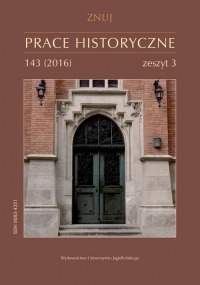The Influence of the Universal and Particular Conciliar Discipline on the Hungarian Conciliar Legislation in the 11th–13th Century
The Influence of the Universal and Particular Conciliar Discipline on the Hungarian Conciliar Legislation in the 11th–13th Century
Author(s): Szabolcs SzuromiSubject(s): History, Cultural history, Local History / Microhistory, Social history, Middle Ages, 13th to 14th Centuries
Published by: Wydawnictwo Uniwersytetu Jagiellońskiego
Keywords: Hungarian Conciliar Legislation; 11th–13th c.; Decretales Pseudo-Isidorianae; Decretum Burchardi Wormatiensis; celibacy; simony; marriage; immunity of the Church; secular power
Summary/Abstract: In the 11th century a fundamental problem arose from the independence of national councils: rulers exerted a serious influence on the convocation and course of the councils, on the promulgation of their decrees, as well as on their legal consequences in the society. Moreover, a number of councils – especially when the ruler was present at the sessions – adopted measures even in matters that belonged to the state. Good examples of such a situation in Hungary were the Council of Szabolcs (1092) and the First Council of Esztergom (1100). In the domestic practice, during the reign of King Coloman, the Second Council of Esztergom (1112) already showed us the ecclesiastical legislation as it gradually obtained independence, and also showed the acceptance of those reforms that were made under the increasing influence of the Holy See. Later on, legate Manfred actively contributed to the Third Council of Esztergom in 1169. The provisions of this council radically excluded the influence of secular power, thanks to the personal attendance of the Roman legate. The frequent presence of the papal legates – particularly in the 13th century – had a fundamental impact upon the Hungarian conciliar legislation and the ecclesiastical judicial practice, and also strengthened the papal privileges of the ecclesiastical institutions, to which many of the contemporary written documents bear witness.
Journal: Prace Historyczne
- Issue Year: 143/2016
- Issue No: 3
- Page Range: 463-479
- Page Count: 17
- Language: English

